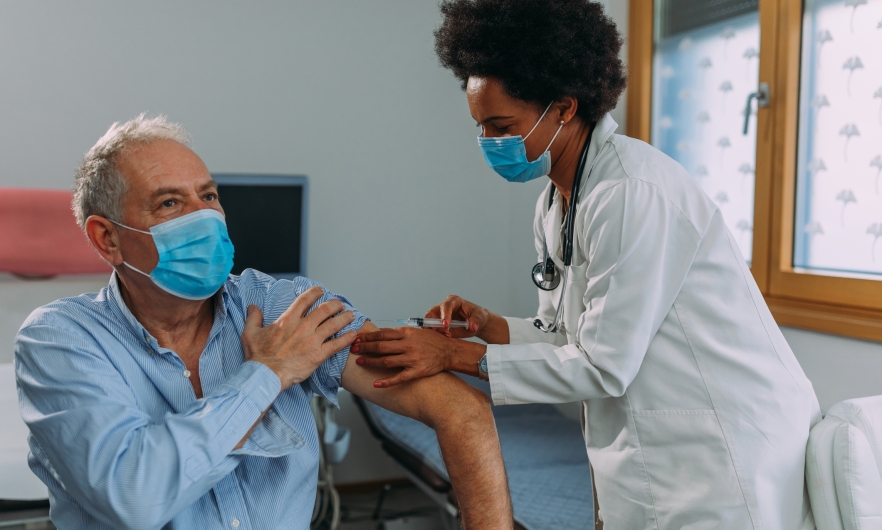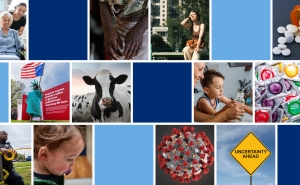Why Are Older Adults Excluded from Vaccine Trials?

The first RSV vaccines approved in the U.S. rolled out this fall for adults 60 and over after being approved by the FDA in May. That’s a rarity in the world of vaccine research, which historically has been dominated by childhood immunizations.
But researchers have been pointing to a glaring omission in the clinical trials for the RSV vaccines: As is often the case, adults over age 80—who are among the most at risk for severe outcomes from RSV—were largely excluded, as were nursing home residents and people who are immunocompromised. Yet these are the people who stand to benefit most from the vaccine.
To be approved, vaccines must first be tested in the age group they’re intended for—but the 65+ category is particularly wide-ranging, encompassing relatively healthy adults as well as the oldest and most frail. Older adults, particularly those with preexisting conditions, are routinely excluded from clinical trials in the name of safety and efficiency—but leaving them out also creates uncertainty about how well products actually work among the oldest populations.
Kawsar Talaat, MD, an associate professor in International Health who led one of Pfizer's COVID-19 vaccine trials in adults, discusses the challenges of including adults over 75 in vaccine trials, why it’s important to include them, and how that can be done while keeping trials running safely and efficiently.
Why are older adults—those in their 80s and 90s—usually excluded from vaccine clinical trials?
Early trial phases are all about safety. These clinical trials are generally done in healthy young adults in the 18-to-50 age range to make sure the product is safe before it’s given to more vulnerable people.
The later stages are about efficacy. By testing a vaccine in people with generally healthier immune systems, researchers maximize the chance of generating an immune response. When a person is older and more frail, the immune system doesn’t work as well and is less likely to respond to any vaccine.
Why aren't older adults included in later stage trials, especially if that population stands to benefit most from the vaccine?
Older adults are more likely to have comorbidities that add complexity to trials. For example, people who have preexisting heart disease may develop an arrhythmia. They're more likely than a younger adult to be on multiple medications, to break a hip, have a GI bleed, or develop cancer or an autoimmune disease. They may end up in the hospital for unrelated problems, or have a new disease pop up. These adverse events may have nothing to do with the product being tested, but if they occur during a trial, researchers still have to capture them in their research.
So even trials that include, say, 60–75-year-olds will not necessarily include those who are even older than that. Or if they do, they'll exclude so many preexisting conditions that are frequently present in older adults that they effectively limit how many people from that population can actually participate in the trial.
How does this impact the vaccine approval process?
When a research team proposes a study to the FDA in the hope of licensing a vaccine, regulators and researchers define the metrics for success.
If a trial’s findings fail to meet those metrics because the study included people who are frail or had comorbidities that may have impacted the trial data, the product won’t be approved.
Participants experiencing medical incidents during the trial or having trouble getting to appointments can also make the trial process longer and costlier, which can deter product manufacturers from designing trials for older adults.
Why is it important to include older adults in these trials?
A vaccine that is effective in a healthy adult under 60 isn’t necessarily going to work as well in someone in their 80s or 90s.
So when a vaccine enters larger efficacy trials, that's when it's really important to start adding older adults and people of all age groups with preexisting conditions. This helps ensure that researchers understand the spectrum of immune responses and vaccine effectiveness across those populations.
For example, the standard flu vaccine is much more effective in a young, healthy adult with a healthy immune system than it is in an older adult or somebody who is frail. Because of this, we now have specialized flu vaccines for people older than 65. Those products have been tested in older adults.
Is it difficult to get older people to participate in clinical trials?
Older adults are generally very eager to participate in clinical trials. They want products that will help them, they often have more free time, and many want to contribute to society.
We saw that with the COVID vaccine trials. From a recruitment standpoint, it was very easy to enroll older adults. However, the exclusion criteria—such as being on immunosuppressive medications or having diabetes, HIV, or kidney disease—sometimes kept them from participating.
COVID vaccine trials also went to older adults right away—how were those trials different?
Because COVID-19 took such a toll on older adults, that population was included in vaccine trials much sooner than they normally would have been. It was critical that older adults have access to the vaccines, which were approved for emergency use, as quickly as possible. And because almost all COVID vaccine trials were run by the NIH, they had more involvement in choosing which age groups were included. Generally, vaccine trials are run by drug manufacturers with input from the FDA.
Outside of the pandemic, there are relatively few vaccines designed specifically for older adults. Adults over 65 are recommended to be up-to-date on vaccines for COVID-19, flu, pneumonia, shingles, Tdap—and now RSV. Historically, most vaccines have been designed for childhood immunization.
How can clinical trials be made more inclusive, but still efficient?
Researchers and regulators could agree on a trial design that divides participants into two groups: a younger, healthier population for licensing purposes, and then a highly vulnerable, fragile population for more thorough data on safety and effectiveness. While a vaccine may not have the same effectiveness in the latter group, that trial would deliver essential data about how the vaccine performs in the vulnerable group.
Ultimately, we want to get the vaccines tested and rolled out to vulnerable populations as early as possible, instead of having them be an afterthought in the clinical trial process. A vaccine that's 50% effective in a population with a higher risk of hospitalization and death is better than a vaccine that's 90% effective in a population with no risk of hospitalization and death.
Annalies Winny is a writer and producer at the Johns Hopkins Bloomberg School of Public Health.





